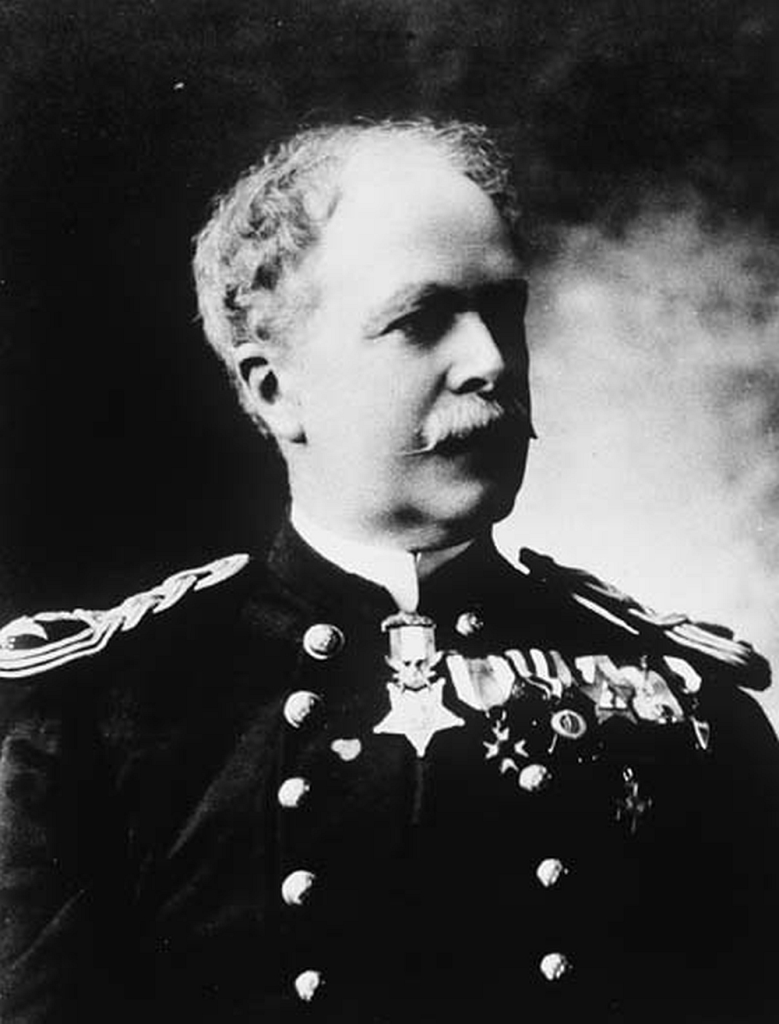The month was February in 1861 and the place was Fort Buchanan – a military installation near Apache Pass in the southeastern Arizona territory. At the time, tension was high between the American military and the Chokonen band of Chiricahua Apaches led by a young chief named Cochise. An unrelated Coyotero Apache raiding party had stolen cattle and kidnapped the 12-year old son of a local rancher named John Ward. Ward blamed Cochise and demanded action by the local U.S. Army at nearby Fort Buchanan. Lt. Col. Morrison ordered an inexperienced young Second Lt George N. Bascom, 7th U.S. Infantry, to proceed to Apache Pass, 150 miles to the Northeast to retake the boy and the stolen stock.
Bascom’s command, consisting of 54 men, arrived at the west end of Apache Pass on February 3rd and set up camp in Siphon Canyon. Cochise’s camp was in Goodwin Canyon, only a short distance away. Cochise, accompanied by his brother and two nephews, entered Bascom’s camp, which was the Apache custom, to greet visitors. Cochise was confronted by Bascom, who believed Ward that Cochise had been responsible for the raid. The Apache leader maintained his innocence and said that if given time, he would find out who had taken the boy and cattle and return them to Bascom. Bascom demanded their immediate return and told Cochise that he and his party would be held as hostages until the return of the boy and the stock. Cochise jumped to his feet and escaped by drawing a knife and slashing his way out of the tent in which they met. Bascom managed to capture Cochise’s brother and two nephews, who were caught by surprise as Cochise escaped.
Cochise later kidnapped three white men to exchange for his relatives held by Bascom. However, Bascom attempted a show of power when more U.S. troops arrived from nearby Fort Breckenridge and refused the exchange; Cochise killed his hostages. The army responded by killing Cochise’s relatives which enraged Cochise and an 11-year long Apache War was on! Bascom then led his men back to Apache Pass to capture Cochise and rescue the rancher’s young son. They marched right into a trap set up by 500 Apaches who surrounded Bascom and his forces. Word reached Fort Buchanan that Bascom and his men were under siege by the Apaches, but there were no reserve forces to go to their rescue.
Lieutenant Bernard John Dowling Irwin, an Irish-born assistant army surgeon from Roundfort, County Roscommon, volunteered to lead a rescue mission if he could find any volunteers to join him. Irwin was only able to recruit 14 men for the dangerous mission but, with no horses available, Irwin and his courageous volunteers began the 100-mile trek to Apache Pass on mules. After fighting and capturing Apaches along the way and recovering stolen horses and cattle, they reached the Apache camp on February 14. Irwin strategically placed his small unit around Cochise and his men, tricking the Apaches into thinking that they were a much larger force. The Apaches fled and Bascom and his men were saved. Bascom and his men then joined Irwin and together they were able to track Cochise into the mountains and rescued the young boy that Cochise had previously secured from the Coyotero Apaches.
The courage and ingenuity of this brave Irishman became the very first military action to be recognized with the congressional Medal of Honor even though the award itself was not created until a year later in 1862. His conspicuous gallantry and intrepidity in an extremely dangerous situation against hostile forces at the risk of his life above and beyond the call of duty was not forgotten and he was presented with the nation’s highest honor on January 21, 1894 just before his retirement. He was promoted to Brigadier General on the retired list in April 1904. This courageous Irishman also established a family tradition of service to his adopted land as so many other Irish immigrants had. His son graduated West Point in 1889, and served as a Major General George Irwin in WWI; his daughter, Amy Irwin McCormick, was a nurse with the Red Cross during WWI and his grandson graduated West Point in 1915 and served in WWII as Lt General Stafford Irwin. And the progenitor of them all, Medal of Honor recipient Brigadier General Bernard J.D. Irwin, sleeps in a hero’s grave at West Point.
Originally posted on February 17, 2014 By Mike McCormack – Read more

